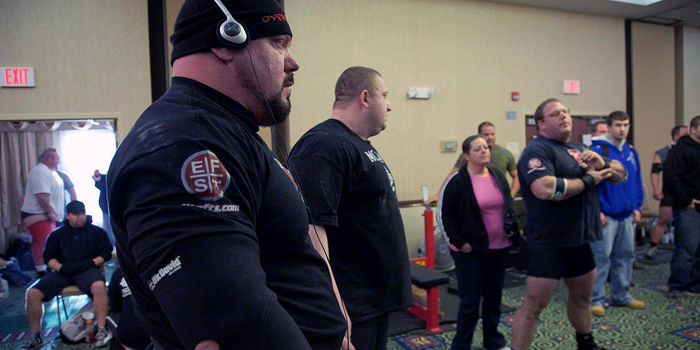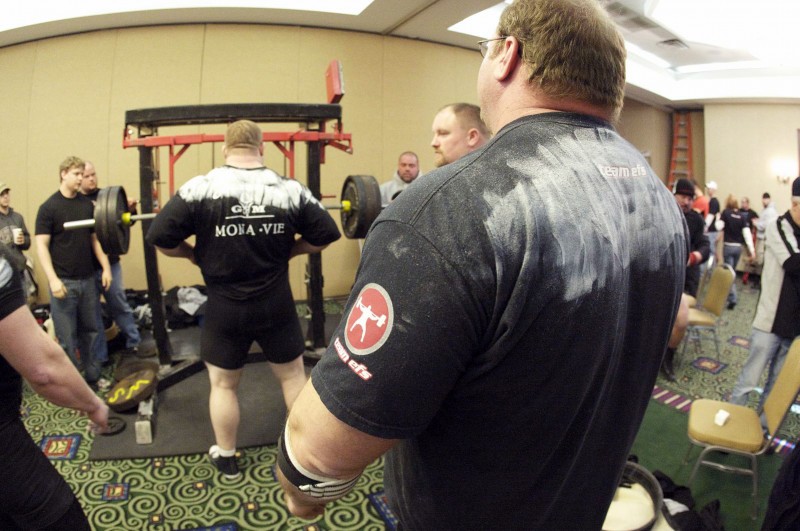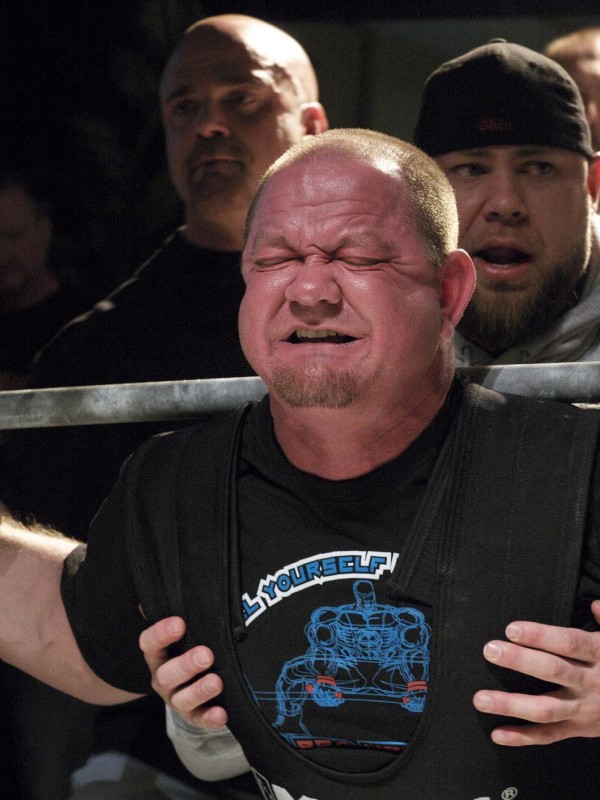
Records keep falling. The all-time records list continues to be updated. So, powerlifters are strong(er) today than ever, right? Maybe, maybe not.
The falling records are a reflection of a few things. First, they are a reflection of the incredibly hard work, dedication, and consistency of the lifters who have honed their technique and who have a drive and determination to compete and win. It is a reflection of the individuals who have combined their physical prowess with the mental focus required to reach powerlifting's upper echelon. It is a reflection of years and or decades of ever onward thinking in this body violent (meaning coming back from injury after injury) sport.
What falling records are also a reflection of is the ever-evolving equipment and tools of the industry that is competitive powerlifting—equipment like the: legendary Pasanella bar, the monolift, the poly shirts, suits and briefs, the wider uprights and bench pads on the modern bench press, the thinner longer deadlift bars, the thicker and longer bench press bars, casting knee sleeves, and the like.
For sure, the top powerlifters today are at the tip of the pyramid of power. They represent the pinnacle of strength for this given frame of time. But they also represent the status of equipment the industry fabricates today.
RECENT: Advice From the Past as Gyms Open in Present Day
Before we get into all of that, let me make a quick and simple comparison and contrast of two gifted athletes from two different eras. Both are the best in the world during their era, but watch how the equipment and technology catapults one gifted athlete beyond his counterpart from an earlier era.
In this case, we are talking about the legendary Jesse Owens and his blistering fast 10.3-second hundred-meter race some 80 years ago during the Berlin Olympics in 1939. We juxtapose this with Usain Bolt's 9.63-second Olympic record. As stated prior, when you reflect on the two men, you have two champions. You have two genetically gifted individuals who complimented the genetic gifts from their parents with hard work, training, dedication, devotion, mental focus, and a drive to excel, overcome, win, and ultimately become the best on the planet at that time.

Diving deeper, however, although there are so many similarities between these two champions, the tools at their disposal to get these records are vastly different—a stark difference in the time it took each of them to get from the start to the 100 meters to the finish line. Meaning, both were the champions of their era, but the difference in their time, not their speed, is marked by the tools available.
Those of us who were sprinters in high school or college know that the start of a sprint is of critical importance as there is not the distance to make up for a slow start in such a short race. But looking at the tools for this start is the first difference between these two sprinters. Usain Bolt used the best starting blocks made, the industry-leading blocks, and they served him well as he (a notoriously slow starter) blasted out of the blocks, and then his feet hit the highly engineered and fabricated track surface. With regard to Jesse Owens' starting blocks, well, he had none. Jesse went from nothing to push off of, onto a track not composed of the fastest running surface ever engineered, but onto a cinder track composed of burned wood and ran his 100 meters in the day's heavy leather shoes with the ultra-long cinder spikes required for that surface. Picture the difference of running on a track vs. running on the loose sand on a beach, and you get the point.
Those are the obvious differences. Throw in the recuperative advantages that a Usain Bolt and current athletes have such as ultrasound, Russian stim, micro-current, the Game Ready machine, and each workout becomes exponentially more beneficial building on the prior workouts. Toss in some nutritional supplements and the like, and you start to wonder, how fast would Jesse have run that same race if he were afforded within these advanced technical parameters.
So you get the point: same amazing athletes, totally different training, and competitive equipment and means.
To get back to the sport of powerlifting, the same holds true for today's powerlifting greats. Take a Lee Moran. Don't know that name? Google it. Part of being a well-rounded powerlifter is to know where your sport came from and his 1,000-pound squat. To this day, strapping a grand on your back and squatting down with it is a whole different league of lifter. Now make that 1,000-pound lift on an old fashioned barbell (think corporate gym bar), not the longer and thicker bars of today (which are the evolution of the Pasanella bar), think singlet and think walking it out with that bar bouncing and whipping. Today's powerlifter squatting a grand with a squat suit, monolift, modern wraps, and a 55-pound or 65-pound extra thick and long bar is still fairly rare and always amazing. Put that same lifter today, but in the conditions Lee Moran faced. Now that amazing feat becomes phenomenal.
This comparison doesn't take anything away from the modern era 1,000-pound squatter, but what it does do is illustrate that the human body, the training methodology, the DNA of a lifter hasn't changed, but the apparatus surrounding that lifter has. One could make a compelling argument that the old-style training methods are better as guys were squatting a grand with inferior equipment. Food for thought for all those program hoppers we all know.
Ted Arcidi is another great example. This is a lifter who in 1985 slipped on, like a t-shirt, his "bench shirt" and pressed out a massive 705 pounds. This press was also done with a standard barbell. To this day, very few have pressed 700 pounds RAW, never mind doing it with a substandard barbell.
This takes nothing away from today's 700-800-900-1000-pound shirted bencher; it just provides perspective.
The takeaway from this is that records will continue to be broken as more people compete—the larger the pool of athletes, the greater the gene pool of strength under the bar and on the platform. RAW records will also continue to fall, also by the increasing pool of lifters, but also the equipment. Ed Coan's 901-pound deadlift, after squatting (deep), benching is a great achievement. That number has been bested in a meet once, but then again, we look at the bars today vs. the bar fabricated in the late 1980s he pulled his 901 pounds with...

The best today is the best today, just as the best from the '70s, '80s, and '90s were the best in their era. We take nothing away from the lifters at the zenith of the sport regardless of their era. Still, it behooves us to see the bigger picture as bigger numbers today do not necessarily translate to the training methods or programs of today being better.
What makes a champion is what has always made a champion and that is the person using the method, not so much the method itself. As I share with my newer-to-the-sport lifters at my gym, if there was a superior training method, everyone would be the strongest. What makes the difference is not a program that can be viewed on a computer or read in a book. What makes the difference is what cannot be seen, and that is the heart and soul of the lifter. What is unseen is the absolute dedication, devotion, consistency, intensity, recovery, and persistence all wrapped around the genetic prowess of the lifter.
Unless you begin to see RAW (no wraps) lifters using the older bars and equipment smashing all-time records left and right, don't dismiss so quickly the training methods of those champions and record holders from two, three, four or five decades ago.
The first Indianapolis 500 showed an average speed of 70mps. Last year's Indy, the average speed was 175mph. Indy 500 drivers didn't just become better drivers; the technology is what has evolved. As humans, we have been evolving ever so slowly over the past 200,000 years. So it is mathematically and scientifically improbable that within the last twenty years, humans' DNA changed so drastically that their total, collectively, is many hundreds of pounds greater. That is simply not the case.
We, as a species, strive to become the strong(est) version of ourselves, competing against our own DNA. As we do, we utilize the modern tools of the trade to our advantage: the elitefts monolifts, Mastodon bars, Texas deadlift bars, and squat suits. So keep in mind, the contest has always been you against you. As you continue down that journey, look beyond methods and training tools of the here and now. Newer is not always better. You owe it to yourself not to miss out on something that is tried and true vs. shiny and new.
Wishing you the best in your training and meet prep!











6 Comments